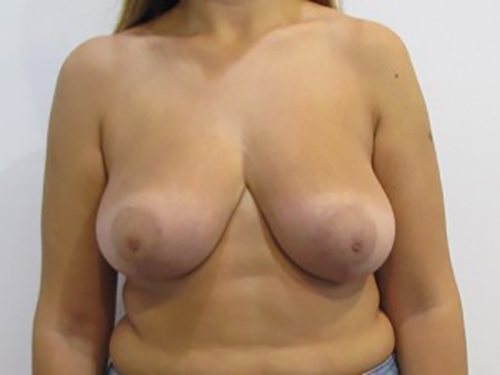
If your breasts are larger than you’d like them to be, their size can be a physical and emotional burden. Overly large breasts can lead to neck and back pain, poor posture, and issues fitting into clothes. They can also cause self-consciousness and attract unwanted attention.
Those problems are among the many reasons why women may decide to get a breast reduction. It could be a life-changing procedure that addresses your medical, emotional, and aesthetic needs. At Farris Plastic Surgery, Dr. Zachary Farris is a double board-certified plastic surgeon who is one of the premier practitioners in the Dallas-Fort Worth area. He’s committed to helping you look the way you’ve always wanted. Call 214-363-1073 today to schedule a consultation.
Benefits of Breast Reduction
Breast reduction could drastically improve your physical and emotional well-being in ways such as:
- Reduced back, neck, and shoulder pain
- Ability to exercise and perform daily tasks more comfortably
- Better posture
- Improved self-image
- Access to a wider variety of bras and clothes
How will my breasts change with reduction surgery?
The improvements to a patient’s breasts with this surgery are similar to a breast lift. Overly large natural breasts are almost always somewhat flattened, with a good deal of sagging skin. Dr. Farris will remove the excess skin and underlying tissue, but he will also lift and return the now smaller breasts to a higher position on the chest. The nipples, which may have been pointing downward, will be relocated and will return to normal appearance. In many cases, Dr. Farris will reduce the size of the areolae, as well. The breasts will be smaller, but they will be firmer and higher on the chest. Now they will be proportional with the rest of the patient’s figure.
Am I a candidate for breast reduction?
You’d likely be a good candidate for breast reduction if:
- You’re at least 18 years old
- You’re unhappy with the size and shape of your breasts
- Your breasts cause you unpleasant physical and emotional issues
- You’re in good overall health
Additionally, breast reduction candidates shouldn’t smoke. If you do smoke, you must be willing to quit before surgery and throughout your recovery. You should also talk to Dr. Farris about whether you plan to have children in the future. While a breast reduction will not impact your ability to breastfeed your kids, the physical changes brought on by pregnancy and childbirth could negatively affect your cosmetic results.
What size do breasts qualify for reduction?
There isn’t any particular size that means a woman can or cannot have this procedure: this is a completely individual decision. Obviously, it’s not something to rush into, as your downsized breasts are a permanent change, and you don’t want to have regrets later on. Your decision to have reduction surgery should be for your health and how you want to see your body moving forward.
How many cup sizes can your breasts be reduced?
This is a question Dr. Farris hears often from women who are eager to rid themselves of the burden of their overly large natural breasts. It’s not really a question of cup size, as it is of decreasing the breast mass. Some patients have more fatty tissue while others have more glandular tissue (which is heavier). Since you’ve had large breasts your entire life, dramatically reducing their size could be somewhat of a shock to the patient.
During your consultation, you’ll discuss with Dr. Farris the decrease you’d like to see with your breasts. It’s always a good idea to keep your breasts proportional with the rest of your figure. As mentioned above, you don’t want to one day regret any changes made.
Bottom line? Most of our patients opt to have a decrease of one to two cup sizes.
How do I prepare for breast reduction surgery?
These are major surgeries with Dr. Farris, so your preparation will be the same as it would be for any surgery. You’ll stop taking any blood thinning medications, aspirin, anti-inflammatory medications, and most herbal supplements for one week prior to your surgery. These can all lead to increased bleeding and subsequent bruising. If you smoke, you’ll need to stop for at least two weeks before and after your surgery, as smoking causes your blood vessels to constrict, and this can impede healing.
Specific for breast reduction surgery, you’ll want to pay attention to your recovery nest. You’ll want to lay low for at least one week after your surgery with Dr. Farris, so you’ll need to make plans to miss at least one week of work. You’ll want to make a comfy place for your recovery, complete with lots of pillows and entertainment right at your fingertips. You won’t be able to sleep at all on your chest for a few weeks, so you’ll need to have pillows to help ensure you can’t roll over onto your front side. You’ll need to avoid reaching upward for a couple weeks, so anything you use often should be brought down to counter level for easy access.
Breast Reduction Procedure
Breast reduction is an outpatient procedure performed under general anesthesia. The entire process will take about two to three hours to complete.
Dr. Farris will make an incision around your areola, vertically down to your breast crease, and horizontally along the crease. Then he’ll remove underlying breast tissue, fat, and excess skin to reshape your breast contour. He’ll reposition your nipples and areolas and reduce the size of enlarged areolas, if necessary. Finally, he’ll tighten the breast skin and close the incisions.
Recovery After Breast Reduction
Before you’re driven home by a friend or family member, Dr. Farris will fit you for a post-operative surgical bra that you’ll wear until your first post-op visit. After that, you can wear a sports bra for comfort and support. You should be able to return to work within a day or two of your procedure.
A general timeline for the rest of your recovery is:
- 3 weeks before you can apply scar-healing products such as Vitamin E cream
- 4 weeks before you can resume exercise or strenuous activities
- 4-6 weeks before you can wear underwire bras again
Dr. Farris will also provide you with specific aftercare instructions that you should follow carefully. It may take up to six months before you see your final results as your post-operative swelling subsides.
Will I lose feeling in my nipples after breast reduction surgery?
While Dr. Farris makes every effort to minimize any disruption to your nipple sensation, there is a good chance there will be some diminishment in sensation. That’s because this procedure removes excess breast tissue and skin, and it typically requires the nipples to be moved. It can be very difficult to preserve all the nerve connections. Some of this sensation can return as the nerves adjust.
Still, most patients feel the gains made through breast reduction are well worth any loss of sensation in their nipples.
What are the potential risks with breast reduction surgery?
The main risk specific to this surgery is loss of nipple sensation or overall changes in breast sensation. This is because the nerves can be impacted by the relatively extensive changes in the breasts. Also, the ability to breastfeed can be impacted by this surgery. Dr. Farris works to avoid these issues, but they are possible.
Really, when considering the risks involved with breast reduction surgery, there is more risk to your health in not addressing your heavy, sagging breasts. Problems such as back and neck pain, nerve compression, posture issues, and the like will only worsen as you get older. Improving these issues by having this surgery will correct those. Plus, we’ve found this surgery gives patients a new impetus to engage in more exercise and outdoor activities because they don’t have to cart around their heavy breasts, and they no longer worry about undue attention. That’s good for your overall health moving forward.
Are breast reductions permanent?
The breast tissue and excess, sagging skin removed by Dr. Farris are permanently gone. The decrease in your breast size is permanent. If you’re tired — physically and emotionally — of the burden of your large natural breasts, a permanent change to smaller, more manageable breasts is more than welcome.
Schedule Your Dallas-Fort Worth Breast Reduction Consultation Today
Dr. Farris is dedicated to helping his patients in the Dallas-Fort Worth area and surrounding locations in Texas achieve the body they’ve always desired. A breast reduction from Dr. Farris could significantly improve your physical and emotional well-being.
Call 214-363-1073 today to schedule a consultation.
Breast Reduction FAQs
Where are the scars located in a breast reduction?
Depending on the technique used, the scar can be anchor shaped or lollipop shaped. The anchor shaped scar goes around the perimeter of the areola, extends down to the breast crease and continues horizontally along the breast crease. Alternatively, the lollipop shaped scar goes around the perimeter of the areola and extends down to the breast crease only.
How long will the results last after a breast reduction?
The results can last a very long time. However, keep in mind that weight change, pregnancy, gravity’s pull on your breasts and aging all have an effect on your breast appearance as you get older.
Where are the scars located in a breast reduction?
Depending on the technique used, the scar can be anchor shaped or lollipop shaped. The anchor shaped scar goes around the perimeter of the areola, extends down to the breast crease and continues horizontally along the breast crease. Alternatively, the lollipop shaped scar goes around the perimeter of the areola and extends down to the breast crease only.
Is the breast also lifted with a breast reduction?
In addition to reducing the volume of the breasts, a breast reduction typically lifts the breasts and improves its shape and position on the chest.
Can a breast reduction also make my breasts more symmetrical?
Yes. By removing different amounts of tissue from each side, we can achieve better symmetry of the breasts.
Does a breast reduction also reduce the size of the pigmented skin around the nipple?
Yes. A breast reduction reduces the size of the pigmented skin around your nipple (areola) if it is large.
When can I go to work after a breast reduction?
Most people are able to return to work after 1 week as long as they’re not engaged in strenuous activity or heavy lifting.
Will I be able to breastfeed after breast reduction?
Depending on the extent of your breast reduction, your future ability to breastfeed may be affected. The milk ducts can get transected if an extensive reduction is performed.
When can I wear an underwire bra?
Typically, you may begin to wear an underwire bra 4-6 weeks after surgery. Until then, you may wear a sports bra.
What are the risks of breast reduction surgery?
Breast reduction offers tremendous benefits but also has risks like any other surgery. The risks for complications are low but include infection, bleeding, fluid collection, asymmetry, wound breakdown, fat or skin necrosis, decreased sensation, poor scarring and reoperation.
Do I have to stop smoking before a breast reduction?
Yes, this is a must. Smoking contains nicotine, which constricts small blood vessels, diminishing the blood supply to tissue. In the setting of flap-like surgery such as breast reduction, this can increase the risk of wound breakdown, tissue death and infection. You must stop smoking at least 2 weeks, preferably 2-3 months, prior to breast reduction.





